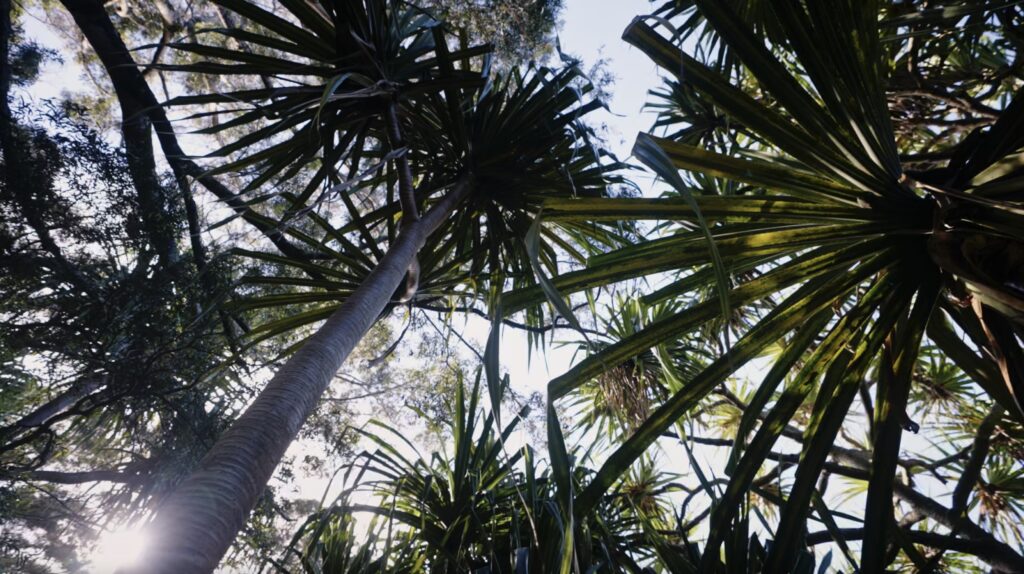
Nā Inoa Ola: The Living Names
This post is from a series called Peʻahi Stories, a place- based literacy project launched in 2022.
Months ago, we began this blog series with a deep dive into the name of the ahupuaʻa and stream we steward: Peʻahi. In exploring place literacy with our neighbors and friends, many additional place names come up in conversation. As we have come to learn from these conversations and through the ethnohistorical study completed by Kepā and Onaona Maly, places can hold many, many names. Perhaps this is a reflection of the many dimensions and facets of relationship to land, to the more-than-human residents of a region, to the elements that one comes to know through intimacy with place.
In a section titled “Inoa ‘Āina – Wahi Pana / Place Names – Storied Landscapes,” the Malys’ study explains:
Hawaiian place names are an important record of cultural attachment and traditional knowledge of place. The names document the intimate relationship shared between the natural landscape practices, and culture of the Hawaiian people. Mo‘olelo (traditions and history) tells us that named locations are significant. It has been observed that “Names would not have been given to—or remembered if they were—mere worthless pieces of topography” (see Handy and Handy with Pukui, 1972:412). In ancient times, named localities served a variety of functions, including:
– describing a particular feature on the landscape;
– may have been [sic] the source of a particular natural resource;
– a source of potable water;
– trails and trail side resting places (o‘io‘ina), such as a rock shelter or tree shaded spot;
– Been [sic] the site of a heiau or other features of ceremonial importance;
– triangulation points such as ko‘a (ceremonial sites and markers for fishing grounds);
– the sites of a single or multiple residences;
– areas of planting or raising fish; or
– the names may have recorded a particular event that occurred in a given area.
Specific to the area where The Merwin Conservancy is located, the study offers a table of significant names found in various references, with more details, such as proper spellings in ʻōlelo Hawaiʻi, background information, and translation:
Place Names of Pe‘ahi and Neighboring Lands
Table 1. Place Names of Pe‘ahi and Vicinity
Spelling in Historical Document
Spelling with Diacritical Marks
Location Reference & Background
Translation (Literal and/or Interpretive)
Haiku
Ha‘i-kū
Mauka boundary of Peʻahi ahupuaʻa
lit. Stand and speak
int. stand behind the spoken word
Halehaku
Halehaku
Ahupua‘a adjoining Peʻahi
lit. Master house
Hukioho
Huki-oho
Peʻahi ahupuaʻa, near-shore ili, extending inland on kula
lit. Pull fronds or shoots (as of fern)
Kaholo
Kāholo
Peʻahi ahupuaʻa
lit. Swift, nimble
Kapuai Hill
Puu o Kapua‘i, Kapua‘i-o-Kamehameha
Prominent hill in mid-Pe‘ahi
lit. Hill of the footprint, Footprint of Kamehameha (a noted place of the cultural landscape)
Kauakahiakua
Ka-ua-kahi-akua
Pe‘ahi Ahupua‘a, ‘āina lo‘i
int. The rains at the place of the gods, perhaps named for the father of the kahuna Kealaulumoku, composer of a famous chant which includes noted places and features of windward Maui
Peahi
Peʻahi
Ahupua‘a
lit. Fan, to beckon or wave, etc.; also the name of a rare endemic fern (Polypodium spectrum), also known as lauaʻe, not to be confused with the common introduced fern which received its name due to its similarity to the native fern of the same name
Pilale
Piʻi-lale?
Pīlali?
Shoreline cliff boundary between Peʻahi and Halehaku
int. Ascend quickly (as up a cliff)
As we read these names and speak them aloud, our relation to this special place deepens. I like to imagine that when we do this, we breathe life into these names, and when we do so with intention, the elements to which these names refer can hear us.
This program is made possible in part by funding from Hawaiʻi Council of the Humanities through the Sustaining the Humanities through the American Rescue Plan (SHARP) with funds from the National Endowment for the Humanities (NEH) and the federal American Rescue Plan (ARP) Act.Any views, findings, conclusions, or recommendations expressed in this series, do not necessarily represent those of the National Endowment for the Humanities.